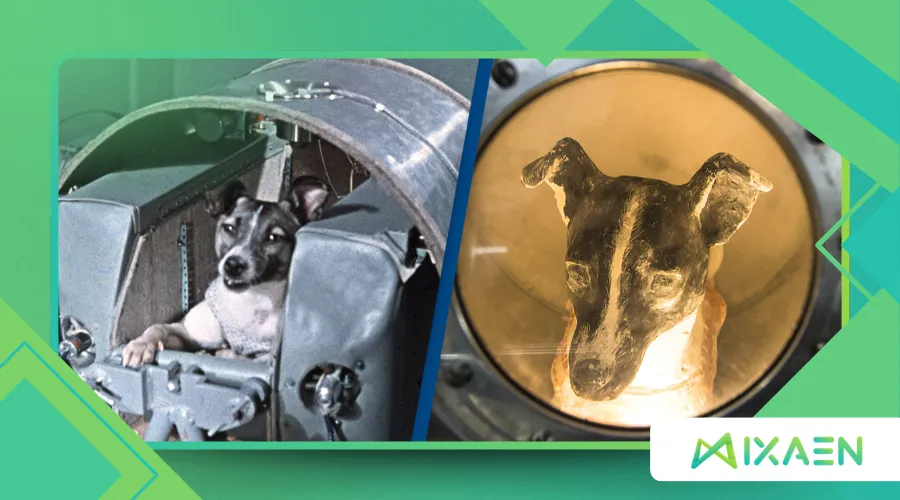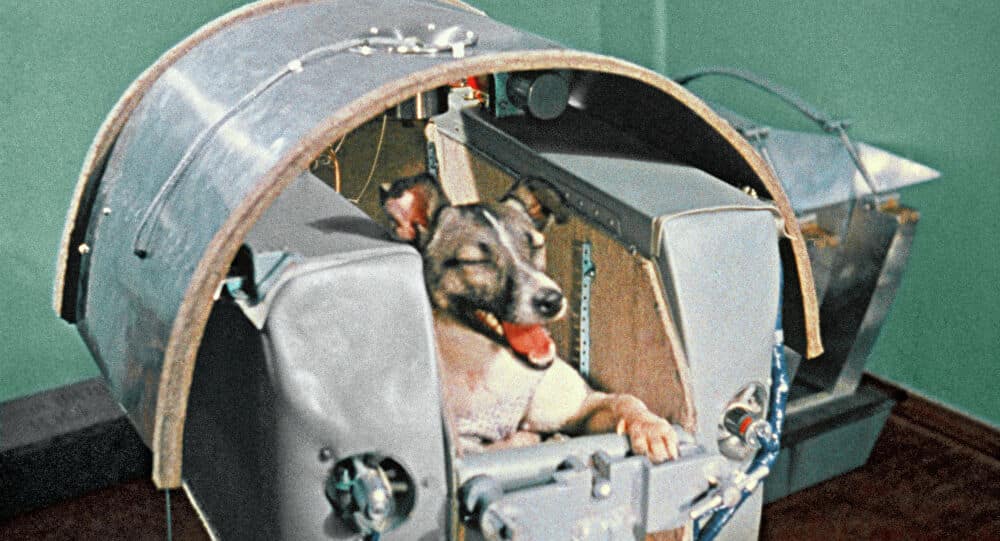The Heartbreaking Story of Laika: The First Living Being Sent into Space

Laika, a stray dog from Moscow, became the first living creature to orbit Earth—a tragic pioneer in humanity’s quest for the stars.
Anúncios
Her story remains one of the most poignant chapters in space exploration, blending scientific ambition with ethical controversy.
While her mission advanced our understanding of space travel, it also sparked debates about animal welfare that persist today.
Laika’s journey is a testament to both human ingenuity and the moral dilemmas we face in the pursuit of knowledge.
As we reflect on her legacy, it is essential to consider how far we’ve come in terms of ethical standards in scientific research.
Laika’s story serves as a catalyst for discussions about the treatment of animals in various fields, highlighting the need for compassion in our quest for knowledge.
A Stray Turned Cosmic Pioneer
In the 1950s, the Space Race was heating up, and the Soviet Union sought to outpace the U.S. by sending a living being into orbit.
Scientists believed dogs were ideal candidates—they were resilient, trainable, and small enough to fit inside cramped spacecraft.
Among the strays gathered from Moscow’s streets, Laika stood out for her calm demeanor.
Her selection was both a moment of hope and a tragic foreshadowing of her fate.
On November 3, 1957, Sputnik 2 carried her into orbit, making her the first Earth-born creature to leave the planet’s atmosphere.
But behind this historic milestone lay a grim reality: her spacecraft had no re-entry plan.
The mission was a significant achievement for the Soviet space program, yet it was also fraught with ethical implications.
Many scientists and animal rights advocates began to question the morality of sending a living being into an environment where survival was not guaranteed.
As Laika ventured into the unknown, she became a symbol of both human ambition and the ethical complexities of scientific progress.
Her story is a reminder that the pursuit of knowledge often comes with difficult choices that can impact innocent lives.
+ Gemini Project: The Space Program That Prepared Humanity for the Moon
The Ethical Dilemma of Progress
The mission was never designed to bring Laika back alive.
Soviet scientists claimed she survived for several days, but declassified documents later revealed she likely died within hours from overheating and stress.
This revelation fueled global outrage, raising questions about the cost of scientific advancement.
The ethical dilemma surrounding Laika’s mission ignited a broader discussion about the treatment of animals in scientific research.
While some argued that her sacrifice paved the way for human spaceflight, others condemned it as unnecessary cruelty.
Even Oleg Gazenko, a key scientist in the program, later expressed regret: “The more time passes, the more I’m sorry about it. We shouldn’t have done it.”
This sentiment highlights the conflict between scientific progress and ethical responsibility, a debate that continues to resonate in modern research.
As we reflect on Laika’s journey, it becomes clear that the pursuit of knowledge must be balanced with compassion for all living beings.
The outcry over Laika’s fate led to increased scrutiny of animal testing practices, prompting scientists to reconsider their methods and the ethical implications of their work.
In the years that followed, international guidelines were established to protect animals used in research, ensuring that their welfare is prioritized in scientific endeavors.

Laika’s Legacy in Modern Space Exploration
Despite the tragedy, Laika’s mission provided critical data on biological survival in space.
Her journey proved that living organisms could withstand microgravity, albeit briefly, influencing later missions like Yuri Gagarin’s historic flight in 1961.
Today, space agencies adhere to stricter ethical guidelines.
NASA and ESA now use advanced simulations and robotic testing to minimize animal testing—though some experiments, like those on the International Space Station, still involve organisms like mice and tardigrades.
In recent years, organizations have made significant strides in developing alternatives to animal testing.
For instance, researchers are exploring the use of computer models and in vitro testing methods that can provide valuable insights without harming animals.
This shift reflects a growing awareness of the ethical implications of using animals in research and a commitment to finding humane solutions.
Moreover, Laika’s legacy continues to influence the design of future missions, as scientists strive to ensure that no living creature is subjected to unnecessary suffering.
As we prepare for missions to Mars and beyond, the lessons learned from Laika’s tragic journey will guide us in making ethical decisions that honor her sacrifice.
++ Buran, the Soviet Space Shuttle: History, Curiosities, and the Fall of a Giant
Table 1: Key Milestones in Animal Spaceflight
| Year | Animal | Mission | Outcome |
|---|---|---|---|
| 1947 | Fruit flies | U.S. V-2 rocket | First animals in space (survived) |
| 1957 | Laika | Sputnik 2 | First Earth orbit (did not survive) |
| 1961 | Chimpanzee (Ham) | Mercury-Redstone 2 | First primate in space (survived) |
The Cultural Impact of a Canine Hero
Beyond science, Laika became a cultural icon.
Her story inspired books, films, and even music—from Nick Abadzis’ graphic novel Laika to the indie band Arcade Fire’s song “Neon Bible.”
Monuments in her honor stand in Russia and beyond, symbolizing both sacrifice and the ethical complexities of exploration.
Yet, her legacy is bittersweet.
While she symbolizes human ingenuity, she also serves as a reminder of the moral lines we must navigate in the pursuit of knowledge.
This duality has sparked discussions about the responsibilities that come with scientific exploration.
Organizations like PETA have used Laika’s story to advocate for animal rights, emphasizing the need for humane treatment in research.
In 2023, a survey revealed that public perception of animal testing in space remains divided, highlighting the ongoing debate surrounding ethical considerations in scientific advancement.
Laika’s influence extends beyond the realm of science; she has become a symbol of resilience and sacrifice, inspiring generations to reflect on the ethical implications of their actions.
Her story encourages us to think critically about the choices we make in the name of progress, reminding us that every step forward should be taken with care and consideration.

Table 2: Public Perception of Animal Testing in Space (2023 Survey)
| Opinion | Percentage |
|---|---|
| Acceptable for critical research | 42% |
| Only with strict ethical oversight | 35% |
| Never justified | 23% |
For more insights into the ethical implications of animal testing in space, visit The Planetary Society.
Conclusion: A Lesson in Humanity
Laika’s story is more than a historical footnote—it’s a mirror reflecting our values.
As we push toward Mars and beyond, her memory challenges us to balance ambition with compassion.
Space exploration should inspire not just wonder, but responsibility.
Her name may only appear eight times here, but her impact echoes infinitely.
As we continue to explore the cosmos, it is crucial to remember the lessons learned from Laika’s journey.
Her sacrifice should serve as a guiding principle for future missions, ensuring that we prioritize ethical considerations alongside scientific progress.
As we look to the future of space exploration, let us honor Laika by committing to humane practices that respect all living creatures.
By doing so, we can ensure that her legacy endures, inspiring future generations to approach scientific discovery with both courage and compassion.
Ultimately, Laika’s story reminds us that the pursuit of knowledge is not just about reaching new heights, but also about understanding our responsibilities to those who share our journey.
